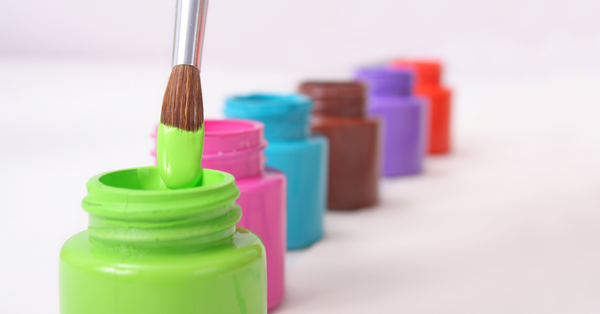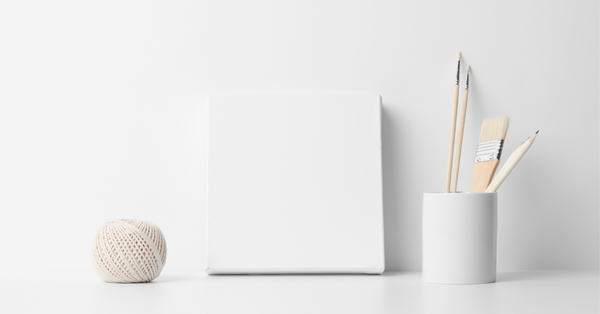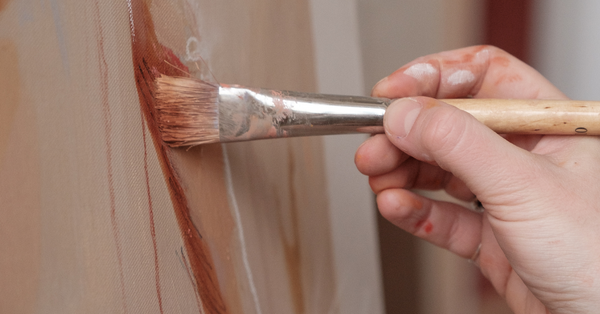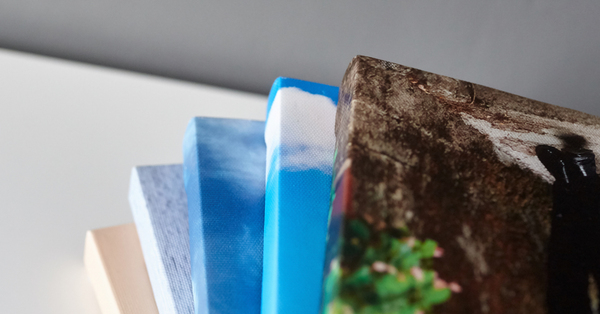
Fabric paint is a great way to give your canvas a unique and creative look. Fabric paint can be applied to canvas with a brush, sponge, or airbrush, and can be used to create a variety of textures and designs.
Whether you’re a beginner or an experienced painter, fabric paint can be an easy way to spice up your canvas. Here are a few things to keep in mind if you are considering using fabric paint on your next canvas project.
TABLE OF CONTENTS
Advantages of Using Fabric Paint on Canvas
Fabric paint is an incredibly versatile medium that can be used to create stunning works of art on canvas. It has a unique, vibrant look that can’t be achieved with traditional paint, and can be used to create a range of different effects. Whether you’re a beginner or a professional artist, fabric paint is a great way to bring your canvas to life.
It Won’t Crack or Peel
Fabric paint is unique because it’s specifically designed to adhere to fabrics. This makes it ideal for painting on canvas, as it won’t crack or peel off like regular paint might. Plus, it’s easy to work with and comes in a variety of colors and textures. You can use it to create a range of effects, from bold, vibrant colors to delicate, subtle textures.

You Can Create Unique Effects
One of the most popular effects of using fabric paint on canvas is the ability to create a raised surface. This is achieved by applying several layers of the paint, allowing each layer to dry before applying the next. This creates a raised texture that can be used to add depth and dimension to your painting. It’s also a great way to create a three-dimensional effect, which can add a unique visual element to your work.
It’s Long-Lasting
Another advantage of fabric paint is that it’s permanent, so you don’t have to worry about it fading or chipping off over time. It’s also resistant to water and other elements, so you don’t have to worry about your artwork being ruined by the weather.
To sum it up, fabric paint is a great way to add a unique and personal touch to your canvas. You can use it to add intricate details or create textures and patterns that will make your painting stand out from the crowd.
Disadvantages of Using Fabric Paint on Canvas
Canvas is a popular choice for painting, as it provides a sturdy surface to work with and allows for a wide variety of techniques. However, there are some drawbacks to using fabric paint on the surface.
It Can Be Challenging to Work With
One of the biggest disadvantages of using fabric paint on canvas is that it can be difficult to achieve a uniform finish. Since most fabric paints are made to be flexible, they can easily spread, run, or smudge when applied to canvas. This can make it hard to achieve a smooth, even coverage.
Additionally, fabric paints don’t always dry quickly, so they may take longer to set.

It Can Be Expensive
Fabric paints also tend to be more expensive than other types of paint. While this may not be a major concern for some, it can be a deciding factor for those looking to save money on a painting project.
Step-by-Step Guide to Using Fabric Paint on Canvas
Now that you understand the advantages and disadvantages of using fabric paint on canvas, you’re ready to get started on your next project. Follow the steps below for best results when painting canvas with fabric paint.
STEP #1 – Choose Your Canvas
Canvases made from cotton, linen, or a mix of the two are ideal for fabric paint. Plus, they tend to be eco-friendly due to many being manufactured from recycled fibers. Just be aware that there are some synthetic canvases on the market which are not suitable for fabric paint.

STEP #2 – Prime Your Canvas
Make sure the surface of your canvas is clean and free of dust and dirt. If the canvas is new and unprimed, you’ll want to give it a coat of primer to protect it from the paint. If the canvas is pre-primed, then you can skip this step.
Primer is a special type of paint that acts as a protective barrier between the canvas and the colored paint. It also helps the paint adhere to the canvas more effectively without absorbing too deeply, ensuring that your painting will stay vibrant and beautiful for many years to come.

Applying a coat of primer is a simple process and can be done with a brush or roller. Gesso is a great, affordable option for primers. I personally use this gesso primer by Winsor & Newton. Be sure to use even, sweeping strokes to ensure that the primer is applied evenly and completely.
After the primer has been applied, allow it to dry completely before beginning to paint. This will help to ensure that your painting has a long-lasting, professional finish.
STEP #3 – Apply the paint
Now’s the fun part!
Before applying the paint, you should make sure you have the correct brush for best results. Synthetic brushes are often made with nylon or polyester bristles and are better suited for painting with fabric paint because they can hold more paint and are more durable than natural bristle brushes.

When selecting a brush for painting fabric paint on canvas, look for one with stiff bristles and a flat or angular tip. Stiff bristles will provide better control and make it easier to get an even coverage of paint. A flat or angular tip will allow you to paint in small areas and help you achieve a more precise line. When using a natural bristle brush, make sure to use a large brush and use gentle pressure to avoid damaging the bristles.
Now it’s time to start painting!
Start with the lightest color first and work your way up to the darker colors. Use a thin layer of paint and let it dry completely before adding the next color. Once all of the paint is dry, you can add more details with the brush. This is a great way to add texture and depth to the canvas.

STEP #4 – Seal the Painting
Sealing your canvas after applying fabric paint is important because it helps to protect the canvas from fading, cracking, or peeling, as well as from dirt and stains. It also helps to make the fabric paint waterproof and helps to preserve the design.

To seal your canvas after applying fabric paint, you can use a fabric sealant spray or fabric paint sealer. I use Mod Podge Sealer for almost all my art & crafts and it works great on pretty much anything. They do a wide range of sealers including one specific for fabrics.
Simply spray or brush the sealant on the area of the canvas you have painted, making sure to cover all of the painted areas. Allow the sealant to dry completely before using the canvas.
Tips for Using Fabric Paint on Canvas
Here are a few tips to keep in mind next time you’re applying fabric paint to canvas:
Always prime your canvas before painting – this is essential to the integrity of the project
Let the primer dry thoroughly before beginning to paint
Be wary of the paint drying time
Wash your brushes quickly in between colors and after your project is finished
Apply thin layers to keep the canvas in tact
Key Takeaway
So, can you use fabric paint on canvas?
Absolutely!
Overall, fabric paint is a great way to add a unique and vibrant look to your canvas. Whether you’re a beginner or a professional artist, fabric paint can help you create a wide range of effects that will help your artwork stand out from the crowd.
Frequently Asked Questions
How do you put fabric paint on a canvas?
Using fabric paint on a canvas is simple once you take a few things into consideration. Start by priming your canvas and letting it dry. Then, apply the paint in thin layers, starting with the lighter colors first. Finally, use a sealant to preserve your work and ensure longevity.
Can you paint on canvas fabric?
Yes! Absolutely. Canvas is one of the most popular and versatile materials to paint.
Can I use acrylic paint on canvas fabric?
Of course! Acrylics work great on almost any surface, especially canvas.
Is fabric paint the same as acrylic paint?
No, there are many differences between fabric paint and acrylic paint.
Fabric paint is specifically designed to adhere to the fibers of fabric and remain flexible when the fabric is stretched or moved. It is typically made with an acrylic-resin base and contains pigments that are both colorfast and fade-resistant.
Acrylic paint, on the other hand, is a type of paint made of pigment suspended in an acrylic polymer emulsion. It is water-soluble, but becomes water-resistant when dry. Acrylic paint is a popular choice for painting on wood, canvas, paper, and other surfaces, as it is highly versatile and dries quickly. It is also durable and provides great coverage.

